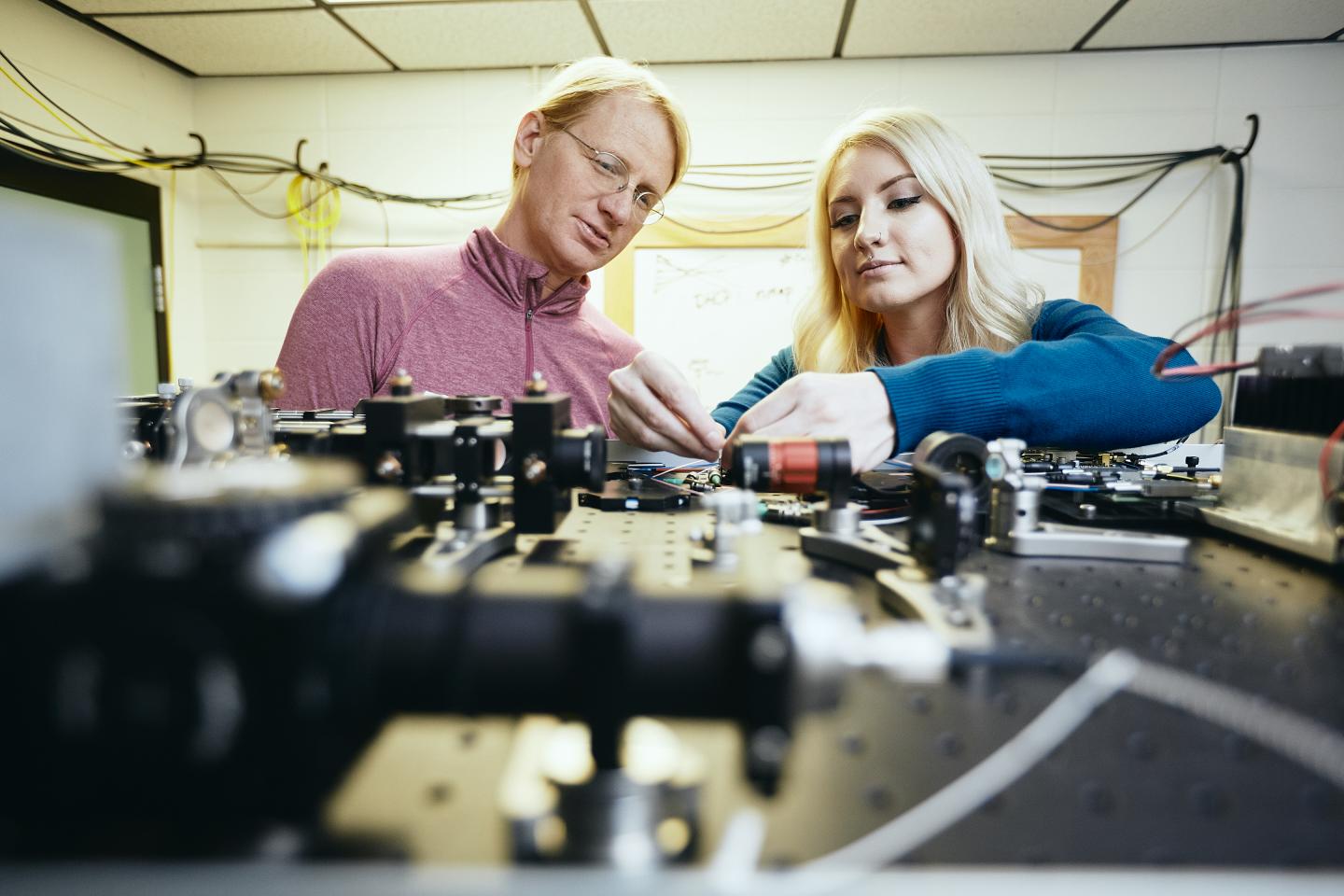
Credit: MSU Photo by Adrian Sanchez-Gonzalez
BOZEMAN — When a hail storm unleashes on Montana’s plains, a precise warning an hour or more in advance could allow ranchers to lead livestock to shelter, gardeners to bring in potted plants and residents to protect vehicles and other valuables.
Once only a dream of weather forecasters, that capability could become widespread as a result of a new technology developed by Montana State University researchers and their collaborators at the National Center for Atmospheric Research.
The tool, which uses low-cost lasers to make detailed, real-time measurements of water vapor in the atmosphere, could soon be deployed at weather stations across the country, providing forecasters a powerful way to track the early development of thunderstorms and other weather events.
According to Kevin Repasky, co-inventor of the technology and a professor in the Department of Electrical and Computer Engineering in MSU’s Norm Asbjornson College of Engineering, water vapor is a primary driver of weather, but scientists have largely lacked a way to continuously and accurately measure it on a large scale.
“That’s why people are getting excited about our work,” Repasky said.
In recognition of that work, Repasky and his collaborators recently won the 2018 Award for Outstanding Accomplishment in Scientific and Technical Advancement from the University Corporation for Atmospheric Research. The award letter praises the technology as rugged, field-deployable and low-cost, and states that it outperforms more expensive, commercially available tools. Repasky called the award “a wonderful honor.”
About 15 years ago, Repasky began working on ways to overcome the main barrier to widespread monitoring of water vapor: cost. Scientists were using specialized laser technologies to take detailed measurements from airplanes, for instance, but the tools were prohibitively expensive for daily use. To aid in daily forecasting, scientists gather a limited snapshot of the atmosphere’s water vapor by launching weather balloons twice each day from roughly 90 locations nationwide.
Repasky saw an opportunity to use lower-cost lasers combined with sophisticated methods of interpreting the light reflecting from the atmosphere’s gases and particles. The first prototypes were built and tested with help from Amin Nehrir, who earned his bachelor’s and then doctorate in electrical engineering at MSU. Nehrir shared in the UCAR award.
What caught the attention of Scott Spuler, a research engineer at the Boulder, Colorado-based National Center for Atmospheric Research, was that the MSU technology could be built for a fraction of the cost of standard water vapor sensors, which at the time cost millions of dollars.
Spuler had been working toward a similar goal with German scientists when he learned about Repasky’s research. Recognizing the advantages of the MSU approach, he contacted Repasky and they formed a partnership.
“The collaboration has been fantastic,” Repasky said. The collaboration includes Catharine Bunn, an MSU doctoral student in physics, and Spuler’s team at NCAR, including six scientists named in the UCAR award.
Currently, five of the sensors, which can be remotely monitored for long-term field operations, are undergoing final field testing. The team is also developing ways that the sensors could also measure the atmosphere’s temperature. In the future, Spuler envisions the sensors deployed in a nationwide grid spaced at intervals of 50 or 100 miles.
Nehrir, now a research scientist at NASA’s Langley Research Center, said that better understanding water vapor’s behavior in the atmosphere is a priority in the scientific community. The ground-based sensors would complement the specialized sensors he uses to study water vapor from aircraft. “We think this could have a significant impact on forecasting severe weather events,” he said.
###
Media Contact
Kevin Repasky
[email protected]
Original Source
http://www.



